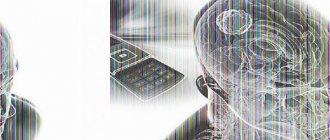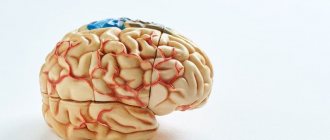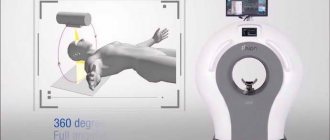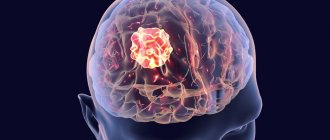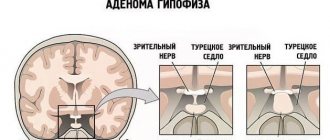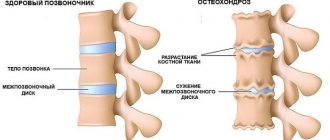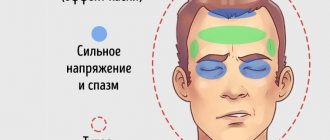Danger Signs
In order to eliminate the problem in time, everyone should know how a headache occurs with a brain tumor. If you discover symptoms of the disease, you should immediately seek qualified help. Very often, people do not go to the doctor on time and try to eliminate migraine attacks with antispasmodics, thereby driving themselves into a corner, triggering the situation.
Headache due to a brain tumor can cause dizziness, nausea, and vomiting in advanced stages. Pain appears regularly. An intense headache with a brain tumor can appear suddenly, against the background of good immunity. Myalgia becomes more intense and does not go away for a long time. Perialgia is accompanied by:
- shortness of breath, heavy sweating;
- spasmodic contractions;
- increase in body temperature;
- deviations in the functionality of visual, auditory, olfactory receptors.
Headaches due to a brain tumor persist for more than a day. Another signal is the persistence of perialgia for a long period of time, after a slight concussion or bruise. Often, headaches due to a brain tumor are accompanied by special symptoms: poor sleep, double vision, inability to coordinate the functioning of the musculoskeletal system, and the appearance of olfactory hallucinations. Painful sensations are practically not eliminated by antispasmodics; they appear in the morning, during sleep, when changing body position. The nature of headaches with brain tumors completely depends on the location of the pathological formations.
What kind of headache is it like with a brain tumor?
Pathological neoplasm cells, growing inside the skull, compress the walls of blood vessels, deform and compress the meninges. This leads to increased intracranial pressure, which causes severe headaches. For primary tumors of brain tissue, cephalgia is often the only sign of the development of pathology. It is necessary to undergo examination if:
- the head begins to hurt during sleep or in the morning, from the moment you wake up;
- the pain intensifies when you lie down, as well as when coughing and sneezing, during physical activity;
- pain sensations are bursting, pulsating or squeezing in nature;
- pain is accompanied by double vision, confusion, irritability to the point of aggression, dizziness;
- seizures similar to epileptic ones appear;
- From time to time, causeless nausea occurs, after painful bouts of vomiting, some relief is felt.
Attacks of cephalalgia intensify as the tumor grows. If at first they can be stopped by taking corticosteroids and diuretics, then over time the effectiveness of these drugs weakens.
Localization of pathological neoplasms
Based on how a headache occurs with a brain tumor, several types of cephalalgia are distinguished by intensity:
- weak manifestations;
- tolerant;
- strong;
- migraines, which cause increased pressure inside the skull.
Cephalgia can be localized in the frontal, temporal, occipital, parietal parts of the skull. Depending on the location of the pain from a benign or malignant brain tumor, there may be a pressing sensation inside the skull every morning. Perialgia is accompanied by a sensation of pulsation. Cephalgia can be monocotyledonous or diffuse.
In the frontal lobe
The frontal lobe most often becomes the site of cancer damage. Perialgia appears in the morning, after sleep. Cancer cells divide very quickly, and the growth grows rapidly. The pathological process thins the walls of blood vessels, some capillaries burst. There are disturbances in the functionality of the circulatory system, resulting in stagnation of fluid inside the skull.
When the patient is sleeping, the cranium is / lies horizontally, plasma with exudate does not leave throughout the entire period of sleep. This leads to pain in the morning. Cephalgia may appear during sleep, when the patient turns over. The state of health becomes more stable when the patient takes a vertical position and begins to move. In an upright position, the brain tissue begins to actively work, and the capillaries begin to circulate plasma, and partial rejection of fluid occurs.
In the temporal lobe
What are the manifestations of headache due to a brain tumor of the temporal lobes? The main manifestation of cancer of the brain tissue of the temples is compressive perialgia of this area. When the tumor grows, it begins to compress the visual and olfactory receptors, provoking visions and olfactory hallucinations.
Visions can be very colorful, they always resemble reality, and the symptom is often confused with a mental disorder. However, brain cancer is characterized by strong, painful sensations that cannot be relieved by painkillers. Sometimes not just visual hallucinations may occur, but also partial loss of vision.
In the crown area
What is the headache like with a parietal brain tumor? In adults, cancer in this area has the same symptoms as oncology of the occipital region. In the morning a severe migraine appears, accompanied by throbbing. Characteristic symptoms are light hallucinations; patients feel as if a bright light is flashing before their eyes.
The increase in VD increases perialgia when the patient tilts his head forward. Relief comes when the patient tilts his head a little back. Sometimes people don't notice that they are in a strange position while sitting on a chair or lying on a sofa.
In the cerebellum
In what part does the headache occur when there is a tumor of brain tissue in the cerebellum? The first symptom of a malignant cancer in this area is a sharp decrease in the quality of vision. Cephalgia is noted in the occipital region and cervical region. As a result of increased VD, the nerve endings of the visual tissue atrophy and are replaced by connective tissue.
Gradually the person loses his sight. The pain is localized mostly in the back of the head, sharp, radiating to the cervical region, causing severe nausea and vomiting. Vomiting is caused by irritation of the nerve endings of the processes of the brain stem. If the cancer puts pressure on the fourth ventricle, symptoms such as sweating, increased blood pressure, and tachycardia are observed.
What can headaches mean?
Cephalgia itself is not a typical sign of cancer and is considered exclusively in conjunction with other symptoms. Headaches can also be caused by other reasons, the most common of which are:
- migraines, which are characterized by attacks of throbbing pain that last for several days;
- hypertension, in which pain is localized in the back of the head and parietal area, occurring with sudden jumps in blood pressure;
- VSD and other vascular diseases;
- neurological diseases - pinched nerve roots, vertebrogenic neuralgia, etc.;
- viral or colds, characterized by a sharp increase in temperature;
- inflammation of ENT organs;
- cranial injuries and post-traumatic pathologies;
- stress, overwork, overheating, etc.
It is important to distinguish symptoms characteristic of tumor development from other types of headaches.
When to sound the alarm and who to go to
Many people ask whether they have a headache when they have a tumor, so that they can clearly understand when they need to see a doctor for help, and when they can just rest and everything will go away. Indeed, in most cases, patients seek help too late, when the disease reaches stage 3-4. In such stages, even with the best treatment, it is not possible to save a person. Being in the third stage of brain tissue cancer, a person dies within a year, even after removing the growth.
Perialgia at the initial stage of the disease is identified in 18% of patients. Every person should know what headaches occur with a brain tumor. Good public awareness of health issues helps to avoid high mortality rates in the future. Alarm signals that the body gives:
- regular cephalalgia;
- lengthening attacks;
- frequent nausea;
- feeling of pressure in the morning or when turning over during sleep;
- vomit;
- dizziness, confusion, epileptic seizures;
- weakness, lethargy;
- feeling tired even after a long sleep.
Having identified the symptomatic picture described above, you should contact a family therapist, who will draw up an overall picture, based on where the headache hurts, how often and intensely the migraine manifests itself. Then the doctor will issue a referral for tests, tomography, and redirect to specialized specialists: neurosurgeons-oncologists, neurologists. You should not constantly attribute cephalalgia to fatigue or changing weather conditions. At the initial stages, the tumor is eliminated without surgery, through drug treatment and chemotherapy.
Why early diagnosis is so important
A feature of tumor processes localized in brain tissue is their location in the space limited by the walls of the skull (intracranial). Because of this, even a benign tumor after a certain time becomes life-threatening for the patient, since its growth leads to compression of cerebral tissues and an increase in intracranial pressure.
According to medical statistics, brain tumors account for about 6% of all tumor pathologies detected by oncologists. Out of every 100 thousand people, 10-15 patients are diagnosed with a cerebral tumor. However, existing methods of treating cerebral oncological diseases can guarantee a patient's life extension by more than 10 years only in the first stage of the disease. An operation performed at the second stage of tumor development prolongs the patient’s life by 5-10 years. When a tumor is detected in the third and fourth stages of the disease, the prognosis is almost always disappointing.
To exclude an unfavorable outcome, it is necessary to undergo an annual check-up of your health status. Modern diagnostic equipment allows you to detect pathological neoplasms even before you develop warning symptoms. The examination will help identify a health problem at a stage when it can be successfully eliminated. Don’t give the disease the slightest chance to defeat you, do a check-up right tomorrow.
Diagnostic methods
A method that allows one to determine the presence/absence of pathological neoplasms of brain tissue is radiodiagnosis. It includes: x-ray, ultrasound, radiomagnetic resonance (MRI). Methods do not always allow one to determine the benign quality of the growth. The next step is to determine the patient’s general health condition.
The state of immunity is assessed through laboratory tests. A general blood test is not able to detect such a terrible disease, but it can tell whether the body has been heavily affected by the pathological process and show the degree of inflammation. Based on these data, a conclusion is made about the presence of cancer. The presence of pathological cell division will show an increased content of plasma protein, moderate cytosis.
Radiocytosis diagnostics is used to determine abnormalities that characterize certain types of oncology. The most important test is a biopsy. This is a surgical procedure that involves separating a small area of tumor tissue and examining it in detail.
Diagnostics uses the needle biopsy method; for therapy, biopsy is used in combination with treatment. This procedure is considered quite dangerous. If adjacent tissues are damaged, a tumor breaks through, or fluid leaks out, the functionality of the body may be disrupted or death may occur. To determine the exact location of the tumor, computed tomography is used.
Parietal lesions
The parietal region makes up the largest part of the brain. When the postcentral gyrus is damaged, the sensitivity of the head on the opposite side is lost. At the same time, the intensity of headaches and other symptoms gradually increases.
A tumor in the lower region leads to loss of sensation in the head and the appearance of seizures. During an epileptic seizure, the facial muscles twitch, then the arms and legs.
Damage to the superior parietal lobe causes hand weakness and muscle atrophy. An epileptic seizure in this case begins with twitching of the facial muscles on the side opposite to the tumor.
The growth of the tumor leads to damage to both hemispheres and the development of astereognosia - a disease in which a person with his eyes closed cannot determine by touch what shape the object he is holding in his hands.
Therapy
Depending on how much the headache occurs when a brain tumor is detected in adults, the location of the perialgia, and the diagnostic results, several treatment options may be used. Treatment methods are divided into complex and surgical. Complex therapy includes:
- irradiation;
- chemotherapy;
- radiotherapy;
- impact on metastases in combination with a cyber knife and a linear accelerator.
Several doctors work on the treatment of patients: a neurosurgeon, an oncologist, a radiologist, a neurologist, and a rehabilitation specialist. After surgical interventions, the patient is under the supervision of the above-mentioned specialists. Today, advanced technologies make it possible to perform operations without craniotomy, through neuronavigation and monitoring.
Frontal lobe damage
The frontal zone is responsible for human behavior in various situations, the ability to stand and walk, for coordinated movements, the ability to think abstractly and develop socially. When this area is affected, a person's social perception and personality changes.
If you experience epileptic seizures, poor coordination of movements, loss of taste, sudden changes in mood and persistent headaches, you should contact a neurologist or neurosurgeon .
Forecast, preventive measures
People often ask how much pain there is and whether a headache with a brain tumor hurts at all. The answer is unsatisfactory. Perialgia of the first stage appears only in 18% of cases, so patients often come to specialists with an advanced disease, when surgery can prolong life by only a year. There is one positive point: prevention of brain cell cancer - MRI diagnostics, the method can be compared with annual fluorography to identify the presence/absence of pathological changes in the structure of the lungs.
In highly developed countries, long ago, when undergoing an annual medical examination, patients were required to undergo an MRI. Another preventive measure is an anti-cancer diet, which includes balanced foods, mainly of plant origin. Fresh vegetables and fruits are high in fiber, which prevents carcinogens from entering the large intestine. Even with preventive measures, no one is immune from cancer.
How does a headache with a brain tumor hurt?
General headache is one of the general cerebral symptoms associated with increased pressure in the cranial cavity (hypertension syndrome). The sensations are characterized as tearing, pressing, bursting. Local pain is caused by irritation of the nerves inside the skull (vagus, glossopharyngeal, trigeminal), cerebral and meningeal vessels, and the walls of the venous sinuses.
It happens that brain cancer is not characterized by headaches at all. This phenomenon is typical for deep localization of tumors. Pain occurs when a growing tumor puts pressure (or other pressure) on the blood vessels lining the brain. Primary neoplasms are often characterized only by headaches, which become the “first call” for diagnosing the disease. This symptom is characterized by specific signs:
- localization;
- intensity;
- character;
- accompanying manifestations.
Intensity
A distinctive feature of headaches with a brain tumor is their intensity. The pain after waking up is very strong, sometimes causing loss of consciousness. Throughout the day they weaken, but do not stop. Pain, close in intensity to a migraine, torments a sick person during sleep, often accompanied by clouding (confusion) of consciousness.
Localization
The localization of the headache is often not synchronized with the location of the neoplasm, and in some cases directly depends on it. Cases of pain depending on the location of damage to brain cells and membranes:
- In the forehead area. Pain occurs when the tumor is localized in the frontal zone of the brain. Accompanied by prolonged seizures of epilepsy, loss of coordination, and mood swings. A tumor that destroys the frontal zone of the brain causes loss of conditioned reflexes. The patient has the impression that he is doing everything for the first time.
- The back of the head. Localization of the tumor in this area causes pain in the head in different places: temporal, frontal, parietal region. Often there is no pain in the back of the head at all.
- In the temporal region (neoplasms of the cerebellum, auditory nerve). This localization of the tumor is characterized by pain on both sides of the head, which is accompanied by frequent surges in intracranial pressure, loss of vision in one eye, and epileptic seizures. Whether the left or right hemisphere of the head hurts depends on the “orientation” of the temporal location of the tumor.
- Parietal part. There is pain when pressed, paresthesia (numbness), which spreads to the torso. The pain is accompanied by cramps.
Various manifestations of headaches complicate the diagnosis of oncology, because the pain can be aching or sharp, vague or intense, stabbing or dull. The following specific symptoms are characteristic of pain caused by a tumor:
- pulsating, bursting, pressing character;
- valvular pain when changing head position;
- sudden appearance;
- strengthening during prolonged horizontal position;
- increasing pain;
- increased frequency of attacks;
- increased after exercise, cough;
- accompanied by numbness;
- signs of confusion occur;
- intracranial pressure increases;
- painful vomiting occurs.
Duration
If brain cancer is accompanied by headaches, they are not continuous. They often occur in the form of independent attacks, the frequency and duration of which increases as the tumor grows. This pain is not relieved by analgesics (injections, suppositories), and does not go away during sleep. At night, the headache due to a brain tumor is constant, dull, causing weakness and nausea. A sharp pain in the head that occurs in the morning lasts at least three hours (the period of “resorption” of the fluid accumulated in the brain overnight). As the tumor grows, attacks of pain become more frequent.


